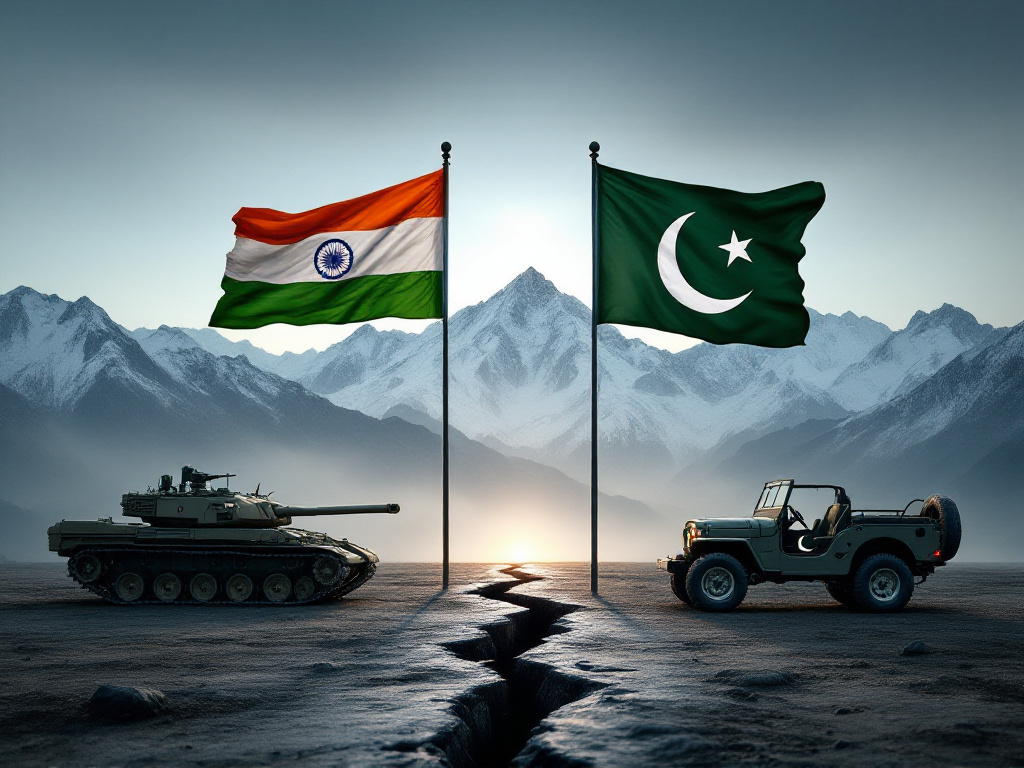The Way Forward: A Call for Sustainable Peace in South Asia
Introduction: A Fragile But Vital Opportunity
South Asia has once again arrived at a critical juncture. Following renewed tensions between India and Pakistan, a U.S.-brokered ceasefire agreement has brought temporary calm. But if history is any guide, such truces—while welcome—rarely last without a broader, more inclusive peace framework. The real test lies ahead: Can this be the moment both nations choose dialogue over confrontation?
At the heart of this challenge lies Kashmir, a decades-old dispute that continues to fuel hostility between two nuclear powers. As highlighted in this blog a way forward a long-term solution must go beyond short-term ceasefires and address the roots of regional instability.
Why This Ceasefire Matters
The May 2025 ceasefire comes after a sharp escalation of military hostilities, once again putting the lives of millions at risk. What makes this truce different is the renewed international pressure, particularly from the United States, urging both sides to return to diplomatic channels.
This agreement is not merely a pause in conflict; it is a strategic opening—an opportunity to initiate serious discussions about peace and regional cooperation. For South Asia, peace isn’t a luxury. It’s a necessity.
The Kashmir Dispute: The Heart of the Matter
The Historical Wound
No discussion on South Asian peace is complete without acknowledging the Kashmir dispute—a deeply rooted conflict since the 1947 partition. While numerous attempts at resolution have been made, the situation deteriorated significantly after India revoked Jammu and Kashmir’s semi-autonomous status in August 2019.
This unilateral move by the BJP-led Indian government was seen by Pakistan—and many neutral observers—as a direct attack on the region’s already fragile identity and autonomy.
A Path Forward
The editorial argues that Pakistan remains willing to engage in peaceful dialogue. However, India’s current posture is described as inflexible. Sustainable peace demands that both sides come to the table with equal urgency and open minds.
One potential solution could involve revisiting the Musharraf-Manmohan framework from the early 2000s—a roadmap that emphasized self-governance, demilitarization, and joint supervision. While not perfect, it could serve as a starting point for renewed negotiations.
The Role of Global Powers
Mediation and Moral Pressure
The role of global actors—especially the United States—has proven critical in de-escalating the latest round of tensions. But the question remains: How far will they go?
While no external power can impose a resolution, they can certainly influence the tone and urgency of the dialogue. For example, sustained diplomatic engagement by the U.S., China, or the UN could encourage a more flexible stance from India—something Pakistan has long advocated for.
Out-of-the-Box Solutions
The editorial rightly emphasizes that peace will not come from recycled rhetoric. Instead, what’s needed are “out-of-the-box” solutions that are acceptable to Pakistan, India, and—most importantly—the people of Kashmir. These solutions must include economic development, demilitarization, and political representation.
The Cost of Inaction
Humanitarian Toll
Without a permanent solution, the people of Kashmir will continue to suffer the consequences—curfews, media blackouts, economic marginalization, and human rights abuses. Peace isn’t just about governments; it’s about people.
Economic and Strategic Impact
Continued hostility between Pakistan and India also threatens regional trade, energy projects, and foreign investment. Instead of reaping the benefits of economic cooperation, both countries spend billions on defense—a tragic misuse of resources in regions where poverty and healthcare challenges persist.
The Need for Political Will
Sustainable peace requires more than diplomacy—it requires courage. Political leaders in both countries must demonstrate the maturity and will to move beyond jingoism and prioritize long-term stability over short-term political gain.
Elections come and go, but the impact of conflict lingers for generations. It’s time for statesmanship, not showmanship.
Conclusion: A Regional Imperative
The way forward is not easy, but it is possible. The current ceasefire, while fragile, offers a rare opportunity to redefine South Asia’s trajectory. Both Pakistan and India must recognize that dialogue is not a sign of weakness—it is the cornerstone of civilized governance.
As this blog poignantly argues, any meaningful peace must address Kashmir, engage all stakeholders, and seek innovative, inclusive solutions. The road to peace is not paved with weapons or threats—it’s built on empathy, vision, and negotiation.
Final Thoughts: A Remedy Rooted in Reason
At RemedyTalks, we believe that lasting change begins with honest conversations. The people of South Asia deserve a future free from the shadow of war. Now is the time for leaders on both sides to rise above nationalism and embrace the shared dream of peace and prosperity.
📢 Share Your Voice
- What’s your take on the current situation?
- Do you believe a long-term peace deal is possible in our lifetime?
- Let us know your thoughts in the comments or tag us on social media.
